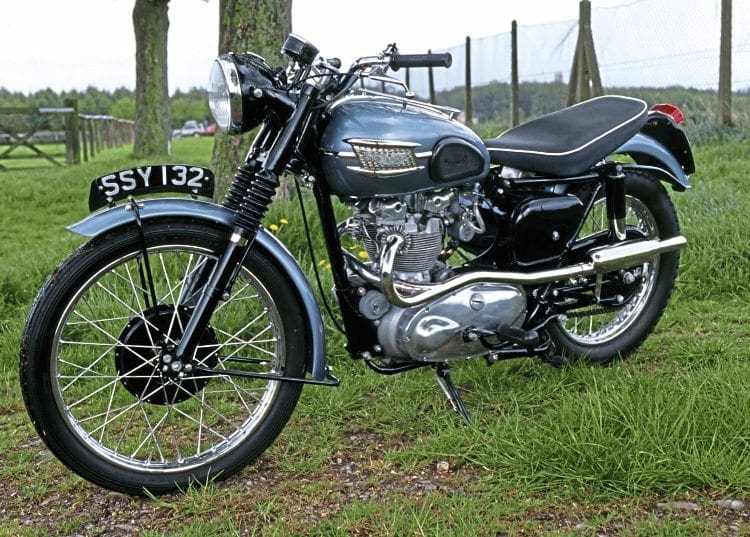Triumph took three gold medals and the team trophy in the 1948 ISDT, and launched a legend
WORDS BY Frank Melling: PHOTOS BY Carol Melling
WHEN THIS TR5 was built in 1956, a visitor to Triumph’s Meriden works would have found the highest-paid workers in the Coventry area, with boundless pride in the machines they were making.

The TR5 Trophy fed a near insatiable demand from the critical American market for off-road sports bikes. These were dual-sport machines which could be used for serious off-road racing, trail riding or road use.
There are two magic keys to the TR5, essential to the machine’s success. It had to be light. It also had to make the correct sort of power for off-road use. To meet both requirements a bronze cylinder head might have been the answer, but this was expensive and heavy. By 1947 Triumph had gained a lot of experience in casting alloy heads and barrels thanks to the RAF generators it had manufactured during the war. After 1945, these parallel exhaust port engines became the basis for the Triumph Grand Prix road-racers. At the same time, Triumph defied the received wisdom that a big, four-stroke single was required to win in off-road events. Jim Alves began competing on a 350 Triumph twin in 1946 and soon shocked the established off-road stars.
Read more in November’s issue of CBG




